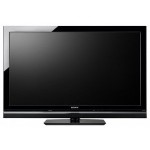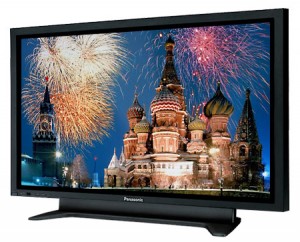HDTV: Battle between Plasma, LCD, and LED Displays
 HDTVs are finding their way into more and more homes, and if you’re in the market for a new flat panel HDTV, you’ve probably noticed that there are three major types to choose from: Plasma, LCD, and LED. We’ve put together a quick guide to help you decide which type is right for you.
HDTVs are finding their way into more and more homes, and if you’re in the market for a new flat panel HDTV, you’ve probably noticed that there are three major types to choose from: Plasma, LCD, and LED. We’ve put together a quick guide to help you decide which type is right for you.
Plasma TVs
 Plasma TVs were among the first of the flat panels to reach the consumer market. This may lead you to think that plasma screens are older and therefore inferior technology. While this is partially true, plasma TVs offer a few benefits over LCD and LED TVs.
Plasma TVs were among the first of the flat panels to reach the consumer market. This may lead you to think that plasma screens are older and therefore inferior technology. While this is partially true, plasma TVs offer a few benefits over LCD and LED TVs.
The most prevalent advantage of a plasma TV is the image quality. Because of the nature of plasma televisions, they can produce extremely good black levels. This leads to excellent real contrast ratios (not to be confused with dynamic contrast ratios discussed later in this article) as well as more vivid colors. Also, because plasma TVs don’t rely on tiny shaped crystals to produce an image, viewing angle are often far better than their LCD and LED counterparts.
It isn’t all green pastures though. Plasma TVs use significantly more electricity than other flat panel displays. Image quality will also slowly degrade over time, though it will generally be five to ten years before any noticeable decline. You also have to be careful of “burn-in” during the first 100 or so hours of use.
All of this makes plasma displays more suited for videophiles and those interested in large, high-quality home theater screens. In the more affordable price ranges, plasmas are generally outclassed by their LCD counterparts.
We have a great list of Plasma TV Reviews to help you make your choice.
LCD TVs
LCD TVs are by far the most popular in homes right now. This is due largely to their recent advent of amazingly affordable prices paired with the most desirable screen sizes, generally between 32 and 47 inches. Apart from the inexpensive price tag, LCD TVs also offer improvements in energy consumption, compared to plasma screens.
Where LCD TVs fall short is in picture quality, generally plagued by two issues: poor black levels and disappointing viewing angles. LCD displays can’t display true blacks because of the way they are lit, which causes light to bleed through pixels that are off, yielding poor contrast ratios. To combat this, manufactures created the concept of “dynamic contrast ratios,” which essentially turns off the backlight when the entire picture is black. In real viewing scenarios, this method has almost no affect, but it allows the manufacturers to report artificially high contrast ratios.
Restrictive viewing angles create problems in general viewing settings. LCD screen look fine when viewed straight on, but if you move too far to one side, you start to see distortion in the colors. This is an issue found in all LCD TVs, but many high-end display use technologies like IPS (In-Plane Switching) to help widen viewing angles to acceptable values.
With so many brands and models to choose from, it is always best to consider LCD TV Reviews to find the best deal.
LED TVs
LED TVs are actually more accurately a type of LCD TV, the only major difference being the type of lights used to illuminate the screen. Traditional LCD TVs use cold cathode fluorescent lamps (CCFLs) generally along the bottom edge to light the screen. LED screens use more energy efficient LED lights instead of CCFLs, either in the same edge-lit style as LCDs, or in a backlit configuration utilizing a matrix of LEDs directly behind the screen.
Edge-lit LED TVs can be extremely thin and will usually have a more uniform brightness than LCD TVs; however, they share the same difficultly producing quality blacks. Backlit LED TV’s have extremely uniform brightness and can actually make real use of dynamic contrast ratios, turning off the backlight for specific portions of the screen that are black.
Eventually, LED TVs will likely start to replace traditional LCD TVs, but for now, the new LED technology is doing a great job driving down the prices for LCD displays. Take a look at our LED TV Reviews to find the best prices available.




GO LEDS! GO LEDS!
I had a plasma TV and had nothing but problems with it..
Hey, I’ve enjoyed your website a lot, it has excellent content, I stumbled upon it while I was looking for hosting reviews on bing. Thanks for sharing all this info, keep up the great work you do here.
It’s nice to find a quality blog post. I enjoy lots of the blog posts on your site.
I prefer LED. It’s clearer and the images are more comfortable to watch.